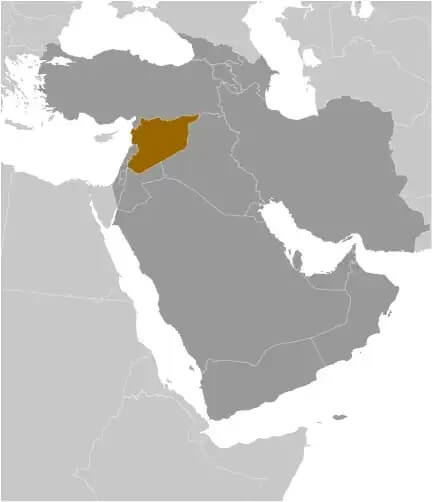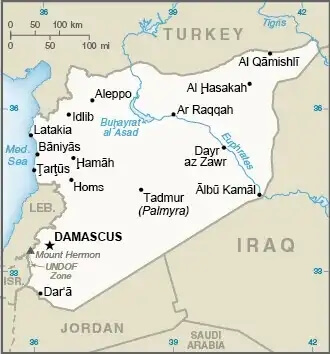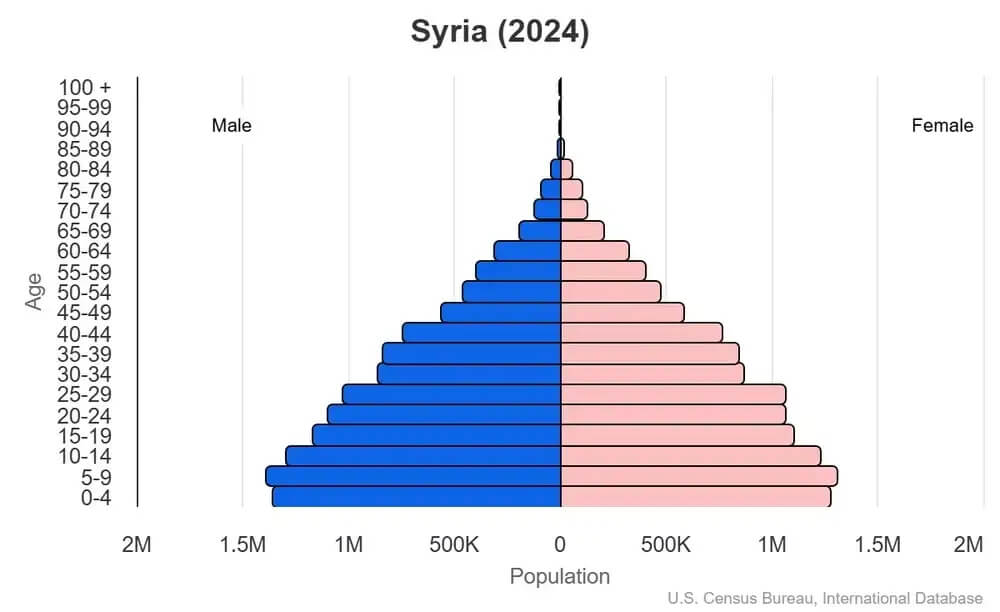World Book
Syria
World Book Index
45


With a score of 45, the country is ranked 143th out of 158 countries in the World Book ranking. (more information)
Introduction
Background
After World War I, France acquired a mandate over the northern portion of the former Ottoman Empire province of Syria. The French administered the area until granting it independence in 1946. Syria united with Egypt in 1958 to form the United Arab Republic. In 1961, the two entities separated, and the Syrian Arab Republic was reestablished.
Geography
Area
total : 187,437 sq km
land: 185,887 sq km
water: 1,550 sq km
Climate
mostly desert; hot, dry, sunny summers (June to August) and mild, rainy winters (December to February) along coast; cold weather with snow or sleet periodically in Damascus
Natural resources
petroleum, phosphates, chrome and manganese ores, asphalt, iron ore, rock salt, marble, gypsum, hydropower
People and Society
Population
total: 23,865,423 (2024 est.)
Ethnic groups
Arab ~50%, Alawite ~15%, Kurd ~10%, Levantine ~10%, other ~15% (includes Druze, Ismaili, Imami, Nusairi, Assyrian, Turkoman, Armenian)
Languages
Arabic (official), Kurdish, Armenian, Aramaic, Circassian, French, English
Religions
Muslim 87% (official; includes Sunni 74% and Alawi, Ismaili, and Shia 13%), Christian 10% (includes Orthodox, Uniate, and Nestorian), Druze 3%
Population growth rate
1.67% (2024 est.)
Government
Government type
presidential republic; highly authoritarian regime
Capital
name: Damascus
Executive branch
chief of state: vacant; former President Bashar al-ASAD was overthrown by Islamist rebels on 8 December 2024; ASAD and his family flew to Moscow where they were granted political asylum
head of government: Prime Minister Muhammad al-BASHIR (since 8 December 2024)
Diplomatic representation from the US
chief of mission: Ambassador (vacant); note - on 6 February 2012, the US suspended operations at its embassy in Damascus; Czechia serves as a protecting power for US interests in Syria
Economy
Economic overview
low-income Middle Eastern economy; prior infrastructure and economy devastated by 11-year civil war; ongoing US sanctions; sporadic trans-migration during conflict; currently being supported by World Bank trust fund; ongoing hyperinflation
Real GDP (purchasing power parity)
$98.858 billion (2023 est.)
$100.066 billion (2022 est.)
$99.338 billion (2021 est.)
Real GDP per capita
$4,200 (2023 est.)
$4,500 (2022 est.)
$4,600 (2021 est.)
Exports
$1.609 billion (2022 est.)
$2.227 billion (2021 est.)
$1.649 billion (2020 est.)
Exports - partners
Turkey 29%, Saudi Arabia 16%, Lebanon 10%, India 10%, UAE 5% (2023)
Exports - commodities
olive oil, phosphates, spice seeds, cotton, tomatoes (2023)
Imports
$6.803 billion (2022 est.)
$6.56 billion (2021 est.)
$3.751 billion (2020 est.)
Imports - partners
Turkey 49%, UAE 11%, China 8%, Egypt 7%, Lebanon 3% (2023)
Imports - commodities
tobacco, plastics, wheat flours, plastic products, seed oils (2023)
Human Development Index
The country's Human Development Index (HDI) is 0.564, ranking it 162nd out of 193 countries tested. (more information)
World Happiness Report
The World Happiness Report ranked the country 150th out of 158 countries tested with a score of 3.462. (more information)



